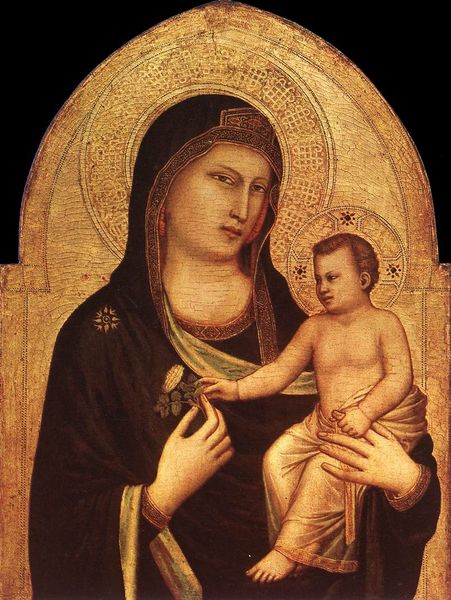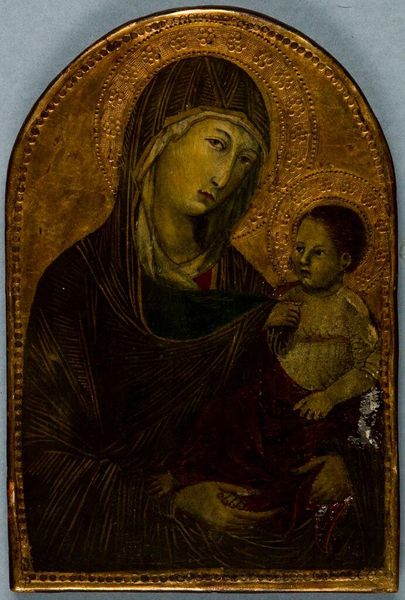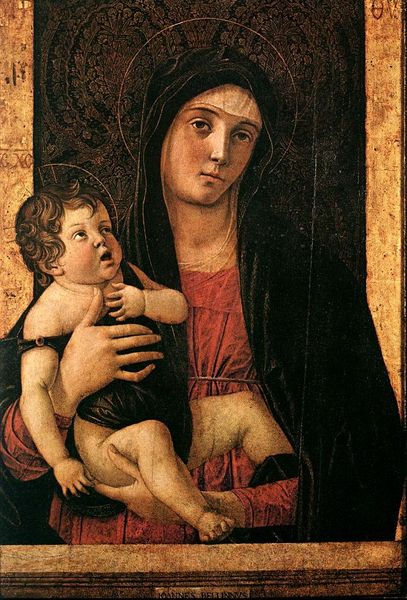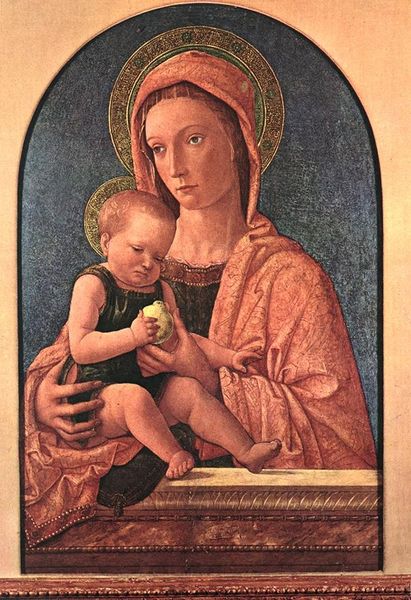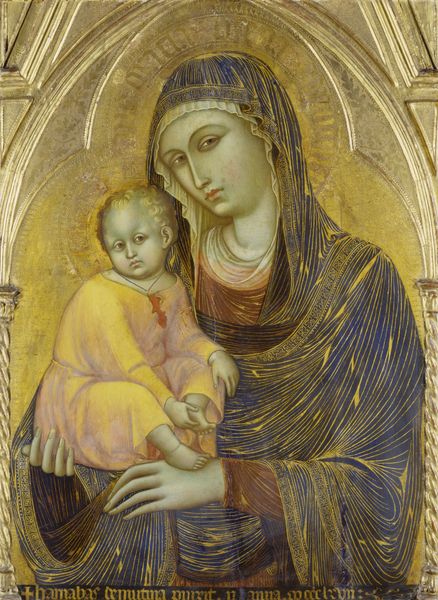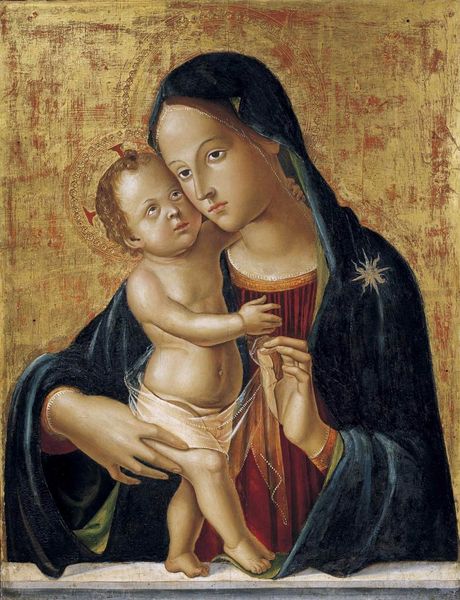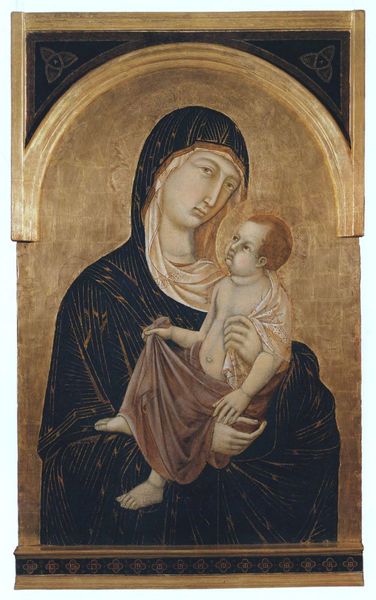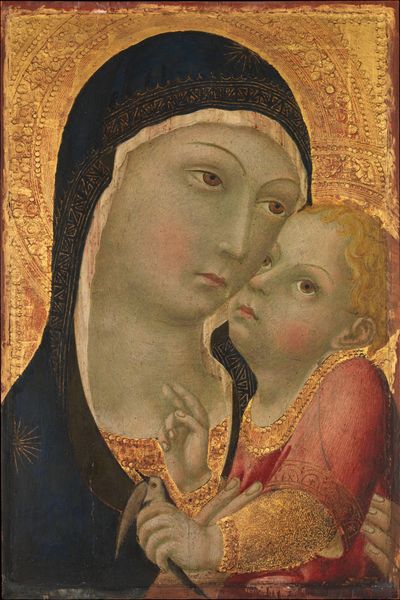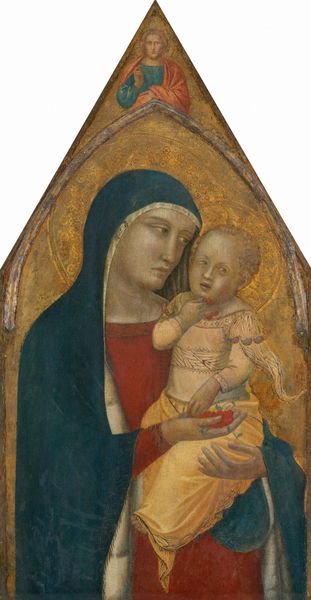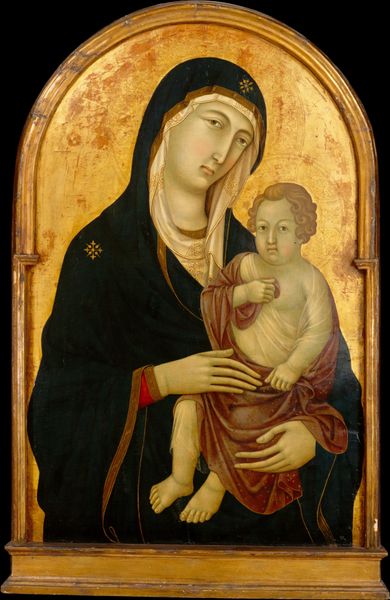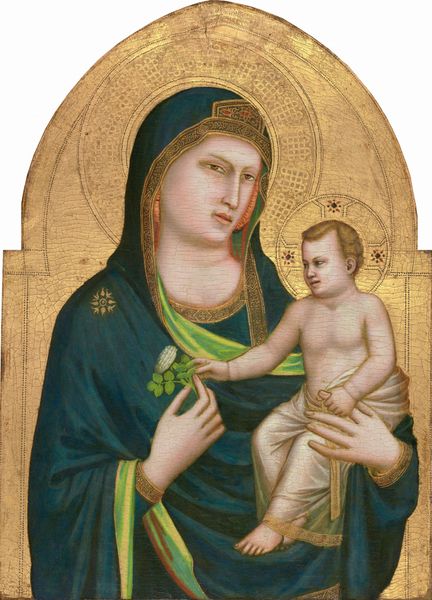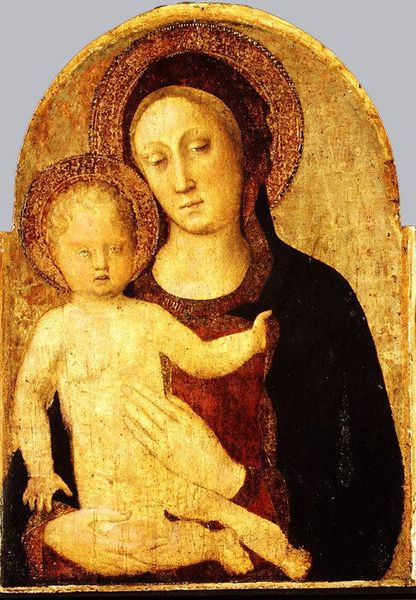
tempera, painting
#
portrait
#
tempera
#
painting
#
sienese-school
#
figuration
#
child
#
italian-renaissance
Copyright: Public domain
Duccio painted this ‘Madonna and Child’ on wood, sometime around the late 13th or early 14th century, in Siena, Italy. The solemnity of the scene is typical of the period. But what can we say about the cultural role of such an image? Siena was a Republic at the time, with strong ties to the Catholic Church. This image would likely have been commissioned for a church or wealthy patron. We can tell that Duccio was innovative as an artist, even though the subject of the Madonna and Child was very conventional. The way that Mary’s cloak falls, for instance, and the tender expressions of mother and child – these would have made the image feel very modern at the time. To fully understand the painting's meaning, we would need to investigate the social and religious context of Siena at the time. This would include examining civic records, church documents, and other artworks of the period.
Comments
No comments
Be the first to comment and join the conversation on the ultimate creative platform.

